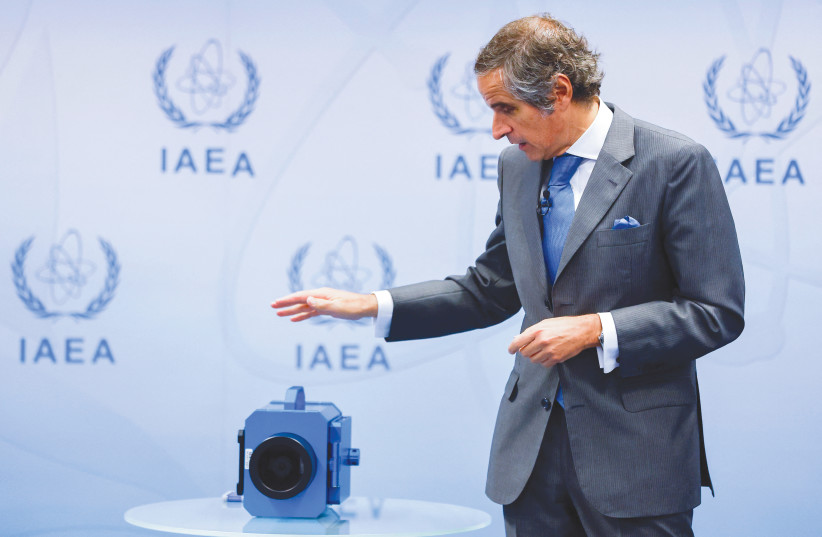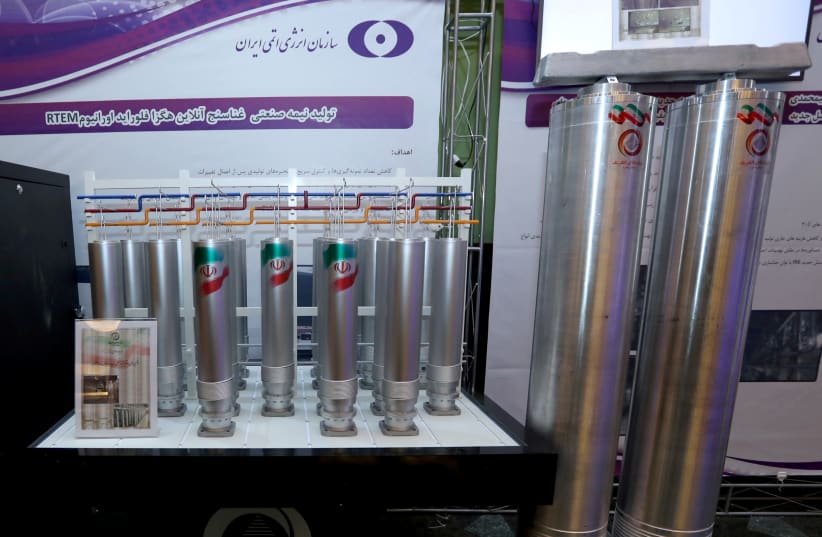Iran has started enriching uranium with one of three cascades, or clusters, of advanced IR-6 centrifuges recently installed at its underground enrichment plant at Natanz, a report by the UN atomic watchdog to member states seen by Reuters said on Monday.
Iran is using the cascade of up to 174 machines to enrich uranium to up to 5% purity, the confidential report said. Of the other two IR-6 cascades at the underground plant, one was undergoing passivation, a process that precedes enrichment, and the other had not yet been fed with nuclear material, it added.
Earlier this month, Behrouz Kamalvandi, the spokesperson for the Iranian Atomic Energy Organization (IAEO) announced that Iran would be activating "hundreds" of new and advanced IR6 and IR1 centrifuges to enrich uranium, claiming at the time that 500 IR6 machines would be activated within 10 to 15 days of the announcement.
The spokesperson stated that the centrifuges were being activated as part of the “Strategic Action Plan to Lift Sanctions and Protect Iranian Nation’s Interest" and to reach a minimum enrichment level of 190,000 separative work units (SWU) to meet "the level of [Iran's] needs."
Kamalvandi added that the International Atomic Energy Agency (IAEA) has been informed of the move. The Iranian Nour News reported shortly after that the new centrifuges had already been installed in underground halls at the Natanz nuclear complex ahead of the announcement.


The significance of the 190,000 SWU goal
Iranian officials have stated in the past that 190,000 SWU is needed to fuel the reactors at the Bushehr power plant and Tehran nuclear facility.
According to the Institute for Science and International Security, the goal of 190,000 SWU cited by Iranian officials usually converts to about 128,000 SWU in more standard units, as Iranians are usually measuring based on uranium hexaflouride (UF6) instead of the more standard basis of uranium (U).
In a report from December, the Institute for Science and International Security stressed that while that amount is relatively modest from a commercial vantage point, "such a program from a nuclear weapons vantage is huge for a country like Iran."
"Merely installing one tenth of that capacity of 128,000 SWU per year is sufficient to produce enough weapon-grade uranium for more than one bomb per year. With a sufficient stock of low enriched uranium, Iran could produce enough weapon-grade uranium for over five weapons per year."
Low enriched uranium is uranium enriched to less than 20% purity. While 5% purity is too low to realistically use in a nuclear weapon, having more uranium already enriched to that level cuts down the time it would take for Iran to enrich it to weapons grade purity.
That same report stressed that about 650 IR-6 centrifuges would be enough to breakout and produce enough weapon-grade uranium for a nuclear weapon in about one month. In June, Iran informed the IAEA that it had begun activating 166 IR-6 centrifuges. The IAEO announcement from earlier this month stated that it was activating another 500 IR-6 centrifuges, which would bring the total number of such centrifuges activated to at least 666.
Efforts to return to JCPOA nuclear deal continue
The announcement by the IAEA also comes as Iran, the European Union and the US continue efforts to return to the JCPOA nuclear deal. Iran was still reviewing a US response to demands it had issued a few weeks ago as of Monday.
